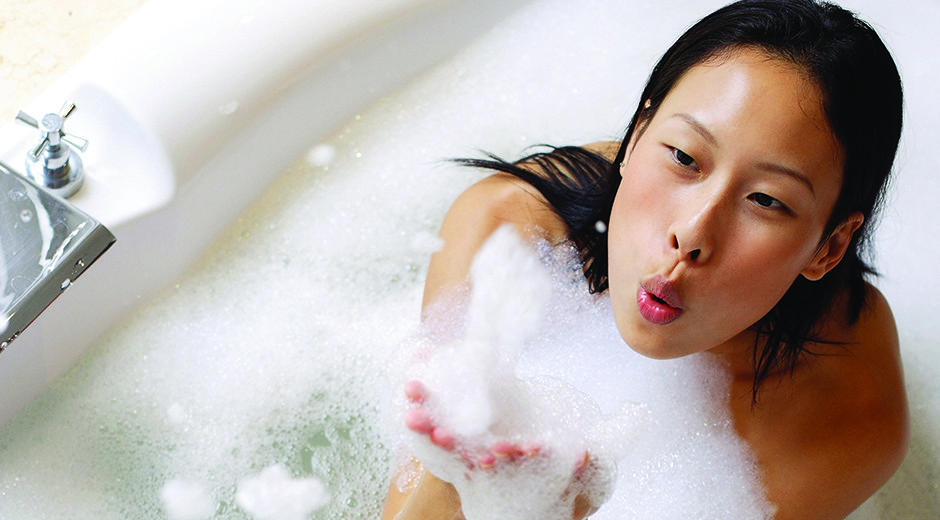Soap is one of those things we take for granted. It’s kind of like air. You don’t think about it much until you run out.
Civilizations from around the world have been making soap for thousands of years. The earliest known soap recipe dates back to 2800 B.C., when the Babylonians mixed animal fats with wood ash to create a cleaning substance. Historians believe the product wasn’t used to wash the body; instead, it was most likely used to clean textile fibers in preparation for weaving into cloth.
Arab chemists were the first to create body soaps from vegetable oils (such as olive oil), aromatic oils and lye, including one for shaving. By 1200 A.D., soap-making centers were sprouting up in Italy, Spain and France to produce products with fragrances for bathing, shaving, shampooing and laundry. In the late 18th century, two French chemists invented industrially manufactured soap bars. Soap remained much the same until the 1970s, when liquid versions appeared.
HOW SOAP WORKS
True soap is a combination of an acid and a base: vegetable or animal fats (fatty acids) with sodium hydroxide (aka, lye, the “base”), and sometimes fragrance oils and salts. The lye converts the oils into soap, a chemical reaction called saponification.
So how does it clean versus just using water? Soap contains a chain of hydrogen, carbon and oxygen atoms. When you’re washing, it is doing two things: One end of the chain is hydrophilic, or attracted to water. The other end is lipophilic, or attracted to oils. So when you lather up, the lipophilic atoms of the chain pick up dirt, oils and bacteria on your skin. Then when you rinse, the hydrophilic atoms on the chain follow the water, sending all of the soap and gunk down the drain.
INGREDIENTS
Many commercially produced bar soaps contain ingredients such as synthetic lathering agents, artificial colors and chemicals that are challenging to pronounce.
One of these ingredients is sodium lauryl sulfate (SLS) for lathering, and it’s best to avoid it. “SLS is a surfactant in many detergents and hand soaps, and it will dry out and irritate your skin,” says Barbara Reed, a dermatologist with the Denver Skin Clinic. Other soap ingredients Reed suggests avoiding include sodium lauroyl isethionate (a foam enhancer) and dipropylene glycol (a chemical solvent), both of which can irritate certain skin types.
Soaps that are gentler on the skin contain an important ingredient: glycerin. “All soaps have an oil or fat and an alkali that combine to produce glycerin, which attracts moisture to your skin and is renowned as a soothing emollient,” says Reed. “But in mass-produced, more-synthetic products, the glycerin is removed straight after the saponification process.”
Other skin-friendly soap ingredients, according to Reed, include moisturizing natural oils and fats like olive oil, coconut oil, palm oil, grapeseed oil, almond oil, jojoba and shea butter. “The type of oil used makes a difference in the lather and the expense,” says Reed.
ANTIBACTERIAL, YES OR NO?
According to the Centers for Disease Control and decades of Food and Drug Administration research, antibacterial soap is not necessary. In fact, antibacterial soap could be harmful because it contains triclosan, a chemical the Environmental Protection Agency classifies as a pesticide. Thoroughly washing your hands with warm water and regular soap is one of the most effective ways to ward off infection.
NATURALLY CLEAN
Each of these soaps and body washes is free of harsh, synthetic ingredients that can irritate your skin.
 J.R. Watkins Daily Moisturizing Body Wash – Lemon Cream
J.R. Watkins Daily Moisturizing Body Wash – Lemon Cream
This body wash contains plant-based cleansers and skin conditioners to gently purify without stripping away natural moisture.
 Mrs. Meyer’s Clean Day Hand Soap – Lavender
Mrs. Meyer’s Clean Day Hand Soap – Lavender
Scented with refreshing lavender essential oil, this soap contains aloe vera gel and olive oil to soften and clean hardworking hands.
 Tom’s of Maine Daily Moisture Beauty Bar
Tom’s of Maine Daily Moisture Beauty Bar
This bar features moisturizing olive oil and natural vitamin E that leave your skin clean and fresh.
 Kiss My Face Pure Olive Oil Soap
Kiss My Face Pure Olive Oil Soap
Made with three simple ingredients—olive oil, water and sea salt—this moisturizing bar works for all skin types.
 Burt’s Bees Citrus & Ginger Body Wash
Burt’s Bees Citrus & Ginger Body Wash
Citrus oils and ginger root extract in this sulfate-free body wash invigorate and cleanse your skin.


 J.R. Watkins Daily Moisturizing Body Wash – Lemon Cream
J.R. Watkins Daily Moisturizing Body Wash – Lemon Cream Mrs. Meyer’s Clean Day Hand Soap – Lavender
Mrs. Meyer’s Clean Day Hand Soap – Lavender Tom’s of Maine Daily Moisture Beauty Bar
Tom’s of Maine Daily Moisture Beauty Bar  Kiss My Face Pure Olive Oil Soap
Kiss My Face Pure Olive Oil Soap  Burt’s Bees Citrus & Ginger Body Wash
Burt’s Bees Citrus & Ginger Body Wash